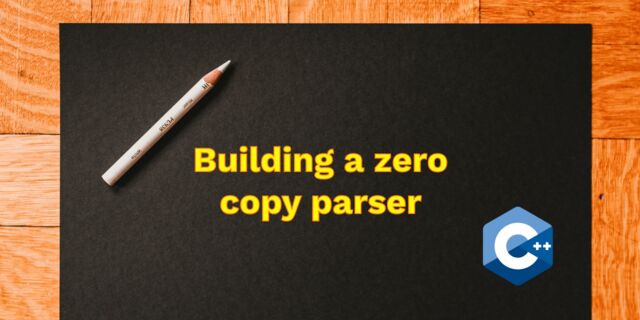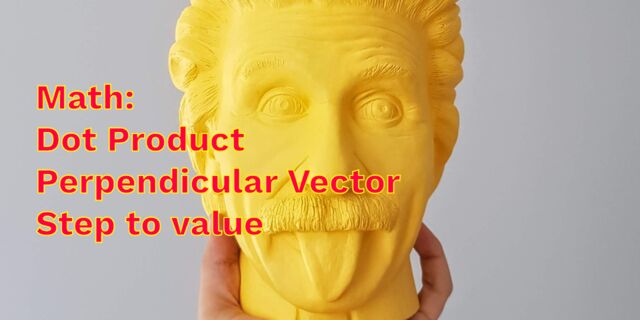Mindset Updated Edition, Carol S. Dweck (Book Notes)
A couple of years ago I got addicted to reading books. Especially books about psychology, marketing, business, design, writing, etc. When I read I mark paragraphs that I find interesting and that grasp take-aways from the book. Because I started to forget these interesting snippets I decided to put them into blog posts. Here you can read the marked paragraphs from the book Mindset - Updated Editition from Dr. Carol S. Dweck.

Robert Sternberg, the present-day guru of intelligence, writes that the major factor in whether people achieve expertise “is not some fixed prior ability, but purposeful engagement.” Or, as his forerunner Binet recognized, it’s not always the people who start out the smartest who end up the smartest.
It’s one thing to have pundits spouting their opinions about scientific issues. It’s another thing to understand how these views apply to you. For thirty years, my research has shown that the view you adopt for yourself profoundly affects the way you lead your life. It can determine whether you become the person you want to be and whether you accomplish the things you value.
When you enter a mindset, you enter a new world. In one world—the world of fixed traits—success is about proving you’re smart or talented. Validating yourself. In the other—the world of changing qualities—it’s about stretching yourself to learn something new. Developing yourself.
In one world, effort is a bad thing. It, like failure, means you’re not smart or talented. If you were, you wouldn’t need effort. In the other world, effort is what makes you smart or talented.
CEOs face another dilemma. They can choose short-term strategies that boost the company’s stock and make themselves look like heroes. Or they can work for long-term improvement—risking Wall Street’s disapproval as they lay the foundation for the health and growth of the company over the longer haul.
People with the growth mindset know that it takes time for potential to flower.
Is there another way to judge potential? NASA thought so. When they were soliciting applications for astronauts, they rejected people with pure histories of success and instead selected people who had had significant failures and bounced back from them. Jack Welch, the celebrated CEO of General Electric, chose executives on the basis of “runway,” their capacity for growth. And remember Marina Semyonova, the famed ballet teacher, who chose the students who were energized by criticism. They were all rejecting the idea of fixed ability and selecting instead for mindset.
In one study, seventh graders told us how they would respond to an academic failure—a poor test grade in a new course. Those with the growth mindset, no big surprise, said they would study harder for the next test. But those with the fixed mindset said they would study less for the next test. If you don’t have the ability, why waste your time? And, they said, they would seriously consider cheating! If you don’t have the ability, they thought, you just have to look for another way. What’s more, instead of trying to learn from and repair their failures, people with the fixed mindset may simply try to repair their self-esteem. For example, they may go looking for people who are even worse off than they are.
John Wooden, the legendary basketball coach, says you aren’t a failure until you start to blame. What he means is that you can still be in the process of learning from your mistakes until you deny them.
First, the students with the fixed mindset had higher levels of depression. Our analyses showed that this was because they ruminated over their problems and setbacks, essentially tormenting themselves with the idea that the setbacks meant they were incompetent or unworthy: “It just kept circulating in my head: You’re a dope.” “I just couldn’t let go of the thought that this made me less of a man.” Again, failures labeled them and left them no route to success. And the more depressed they felt, the more they let things go; the less they took action to solve their problems.
Although students with the fixed mindset showed more depression, there were still plenty of people with the growth mindset who felt pretty miserable, this being peak season for depression. And here we saw something really amazing. The more depressed people with the growth mindset felt (short of severe depression), the more they took action to confront their problems, the more they made sure to keep up with their schoolwork, and the more they kept up with their lives. The worse they felt, the more determined they became!
Yes, he was depressed, but he was coping the way people in the growth mindset tend to cope—with determination.
The problem was that these stories made it into an either–or. Either you have ability or you expend effort. And this is part of the fixed mindset. Effort is for those who don’t have the ability. People with the fixed mindset tell us, “If you have to work at something, you must not be good at it.” They add, “Things come easily to people who are true geniuses.”
There are two reasons. One is that in the fixed mindset, great geniuses are not supposed to need it. So just needing it casts a shadow on your ability. The second is that, as Nadja suggests, it robs you of all your excuses. Without effort, you can always say, “I could have been [fill in the blank].” But once you try, you can’t say that anymore. Someone once said to me, “I could have been Yo-Yo Ma.” If she had really tried for it, she wouldn’t have been able to say that.
Sure, people with the fixed mindset have read the books that say: Success is about being your best self, not about being better than others; failure is an opportunity, not a condemnation; effort is the key to success. But they can’t put this into practice because their basic mindset—their belief in fixed traits—is telling them something entirely different: that success is about being more gifted than others, that failure does measure you, and that effort is for those who can’t make it on talent.
Question: Are mindsets a permanent part of your makeup or can you change them? Mindsets are an important part of your personality, but you can change them. Just by knowing about the two mindsets, you can start thinking and reacting in new ways. People tell me they start to catch themselves when they are in the throes of the fixed mindset—passing up a chance for learning, feeling labeled by a failure, or getting discouraged when something requires a lot of effort. And then they switch themselves into the growth mindset—making sure they take the challenge, learn from the failure, or continue their effort. When my graduate students and I first discovered the mindsets, they would catch me in the fixed mindset, smile kindly, and let me know it.
However, this point is crucial: The growth mindset does allow people to love what they’re doing—and to continue to love it in the face of difficulties. The growth-minded athletes, CEOs, musicians, or scientists all loved what they did, whereas many of the fixed-minded ones did not. Many growth-minded people didn’t even plan to go to the top. They got there as a result of doing what they love. It’s ironic: The top is where the fixed-mindset people hunger to be, but it’s where many growth-minded people arrive as a by-product of their enthusiasm for what they do. This point is also crucial. In the fixed mindset, everything is about the outcome. If you fail—or if you’re not the best—it’s all been wasted. The growth mindset allows people to value what they’re doing regardless of the outcome. They’re tackling problems, charting new courses, working on important issues. Maybe they haven’t found the cure for cancer, but the search was deeply meaningful.
Incidentally, people with a growth mindset might also like a Nobel Prize or a lot of money. But they are not seeking it as a validation of their worth or as something that will make them better than others.
The fixed mindset stands in the way of development and change. The growth mindset is a starting point for change, but people need to decide for themselves where their efforts toward change would be most valuable.
People are all born with a love of learning, but the fixed mindset can undo it. Think of a time you were enjoying something—doing a crossword puzzle, playing a sport, learning a new dance. Then it became hard and you wanted out. Maybe you suddenly felt tired, dizzy, bored, or hungry. Next time this happens, don’t fool yourself. It’s the fixed mindset. Put yourself in a growth mindset. Picture your brain forming new connections as you meet the challenge and learn.
How do you act when you feel depressed? Do you work harder at things in your life or do you let them go? Next time you feel low, put yourself in a growth mindset—think about learning, challenge, confronting obstacles. Think about effort as a positive, constructive force, not as a big drag. Try it out.
Edison was no naïve tinkerer or unworldly egghead. The “Wizard of Menlo Park” was a savvy entrepreneur, fully aware of the commercial potential of his inventions. He also knew how to cozy up to the press—sometimes beating others out as the inventor of something because he knew how to publicize himself. Yes, he was a genius.
In fact, students with the fixed mindset tell us that their main goal in school—aside from looking smart—is to exert as little effort as possible. They heartily agree with statements like this: “In school my main goal is to do things as easily as possible so I don’t have to work very hard.” This low-effort syndrome is often seen as a way that adolescents assert their independence from adults, but it is also a way that students with the fixed mindset protect themselves. They view the adults as saying, “Now we will measure you and see what you’ve got.” And they are answering, “No you won’t.”
Because they think in terms of learning, people with the growth mindset are clued in to all the different ways to create learning. It’s odd. Our pre-med students with the fixed mindset would do almost anything for a good grade—except take charge of the process to make sure it happens.
Benjamin Bloom, an eminent educational researcher, studied 120 outstanding achievers. They were concert pianists, sculptors, Olympic swimmers, world-class tennis players, mathematicians, and research neurologists. Most were not that remarkable as children and didn’t show clear talent before their training began in earnest. Even by early adolescence, you usually couldn’t predict their future accomplishment from their current ability. Only their continued motivation and commitment, along with their network of support, took them to the top. Bloom concludes, “After forty years of intensive research on school learning in the United States as well as abroad, my major conclusion is: What any person in the world can learn, almost all persons can learn, if provided with the appropriate prior and current conditions of learning.” He’s not counting the 2 to 3 percent of children who have severe impairments, and he’s not counting the top 1 to 2 percent of children at the other extreme that include children like Michael. He is counting everybody else.
But aren’t students sorted into different ability levels for a reason? Haven’t their test scores and past achievement shown what their ability is? Remember, test scores and measures of achievement tell you where a student is, but they don’t tell you where a student could end up.
But some teachers preached and practiced a growth mindset. They focused on the idea that all children could develop their skills, and in their classrooms a weird thing happened. It didn’t matter whether students started the year in the high- or the low-ability group. Both groups ended the year way up high. It’s a powerful experience to see these findings. The group differences had simply disappeared under the guidance of teachers who taught for improvement, for these teachers had found a way to reach their “low-ability” students.
The fixed mindset limits achievement. It fills people’s minds with interfering thoughts, it makes effort disagreeable, and it leads to inferior learning strategies. What’s more, it makes other people into judges instead of allies. Whether we’re talking about Darwin or college students, important achievements require a clear focus, all-out effort, and a bottomless trunk full of strategies. Plus allies in learning. This is what the growth mindset gives people, and that’s why it helps their abilities grow and bear fruit.
Here’s what this means: Just because some people can do something with little or no training, it doesn’t mean that others can’t do it (and sometimes do it even better) with training. This is so important, because many, many people with the fixed mindset think that someone’s early performance tells you all you need to know about their talent and their future.
Both groups were exactly equal to begin with. But right after the praise, they began to differ. As we feared, the ability praise pushed students right into the fixed mindset, and they showed all the signs of it, too: When we gave them a choice, they rejected a challenging new task that they could learn from. They didn’t want to do anything that could expose their flaws and call into question their talent.
We praised some of the students for their ability. They were told: “Wow, you got [say] eight right. That’s a really good score. You must be smart at this.” They were in the Adam Guettel you’re-so-talented position. We praised other students for their effort: “Wow, you got [say] eight right. That’s a really good score. You must have worked really hard.” They were not made to feel that they had some special gift; they were praised for doing what it takes to succeed.
Research by Claude Steele and Joshua Aronson shows that even checking a box to indicate your race or sex can trigger the stereotype in your mind and lower your test score. Almost anything that reminds you that you’re black or female before taking a test in the subject you’re supposed to be bad at will lower your test score—a lot.
This is why. When stereotypes are evoked, they fill people’s minds with distracting thoughts—with secret worries about confirming the stereotype. People usually aren’t even aware of it, but they don’t have enough mental power left to do their best on the test. This doesn’t happen to everybody, however. It mainly happens to people who are in a fixed mindset. It’s when people are thinking in terms of fixed traits that the stereotypes get to them. Negative stereotypes say: “You and your group are permanently inferior.” Only people in the fixed mindset resonate to this message.
The Polgar family has produced three of the most successful female chess players ever. How? Says Susan, one of the three, “My father believes that innate talent is nothing, that [success] is 99 percent hard work. I agree with him.” The youngest daughter, Judit, is now considered the best woman chess player of all time. She was not the one with the most talent. Susan reports, “Judit was a slow starter, but very hardworking.”
Think of times other people outdid you and you just assumed they were smarter or more talented. Now consider the idea that they just used better strategies, taught themselves more, practiced harder, and worked their way through obstacles. You can do that, too, if you want to.
Are there situations where you get stupid—where you disengage your intelligence? Next time you’re in one of those situations, get yourself into a growth mindset—think about learning and improvement, not judgment—and hook it back up.
As he watched, listened, and mulled it over, it dawned on Beane that mindset was more important than talent. And not long after that, as part of a group that pioneered a radically new approach to scouting and managing, he came to believe that scoring runs—the whole point of baseball—was much more about process than about talent.
For Jordan, success stems from the mind. “The mental toughness and the heart are a lot stronger than some of the physical advantages you might have. I’ve always said that and I’ve always believed that.” But other people don’t. They look at Michael Jordan and they see the physical perfection that led inevitably to his greatness.
The sportswriters on the plane agreed that character is all. But they confessed that they didn’t understand where it comes from. Yet I think by now we’re getting the idea that character grows out of mindset. We now know that there is a mindset in which people are enmeshed in the idea of their own talent and specialness. When things go wrong, they lose their focus and their ability, putting everything they want—and in this case, everything the team and the fans so desperately want—in jeopardy. We also know that there is a mindset that helps people cope well with setbacks, points them to good strategies, and leads them to act in their best interest.
Character, Heart, Will, and the Mind of a Champion. It goes by different names, but it’s the same thing. It’s what makes you practice, and it’s what allows you to dig down and pull it out when you most need it.
But, as Billie Jean King tells us, the mark of a champion is the ability to win when things are not quite right—when you’re not playing well and your emotions are not the right ones.
Finding #3: People with the growth mindset in sports (as in pre-med chemistry) took charge of the processes that bring success—and that maintain it.
How come Michael Jordan’s skill didn’t seem to decline with age? He did lose some stamina and agility with age, but to compensate, he worked even harder on conditioning and on his moves, like the turnaround jump shot and his celebrated fallaway jumper. He came into the league as a slam-dunker and he left as the most complete player ever to grace the game.
McEnroe also admits that his on-court temper tantrums were often a cover for choking and only made things worse. So what did he do? Nothing. He wished someone else would do it for him. “When you can’t control yourself, you want someone to do it for you—that’s where I acutely missed being part of a team sport.People would have worked with me, coached me.”
Worrying about being a nobody is not the mindset that motivates and sustains champions. Somebodies are not determined by whether they won or lost. Somebodies are people who go for it with all they have. If you go for it with all you have, Iciss Tillis—not just in the games, but in practice too—you will already be a somebody.
Character, heart, the mind of a champion. It’s what makes great athletes and it’s what comes from the growth mindset with its focus on self-development, self-motivation, and responsibility.
Even though the finest athletes are wildly competitive and want to be the best, greatness does not come from the ego of the fixed mindset, with its somebody–nobody syndrome. Many athletes with the fixed mindset may have been “naturals”—but you know what? As John Wooden says, we can’t remember most of them.
Athletes with a growth mindset find success in learning and improving, not just winning. The more you can do this, the more rewarding sports will be for you—and for those who play them with you!
What distinguished the thriving companies from the others? There were several important factors, as Collins reports in his book, Good to Great, but one that was absolutely key was the type of leader who in every case led the company into greatness. These were not the larger-than-life, charismatic types who oozed ego and self-proclaimed talent. They were self-effacing people who constantly asked questions and had the ability to confront the most brutal answers—that is, to look failures in the face, even their own, while maintaining faith that they would succeed in the end.
Does this sound familiar? Collins wonders why his effective leaders have these particular qualities. And why these qualities go together the way they do. And how these leaders came to acquire them. But we know. They have the growth mindset. They believe in human development.
And these are the hallmarks: They’re not constantly trying ideas. He had so much regard for his ideas that he believed Enron should be able to proclaim profits as soon as he or his people had the idea that might lead to profits. This is a radical extension of the fixed mindset: My genius not only defines and validates me. It defines and validates the company. It is what creates value. My genius is profit. Wow! And in fact, this is how Enron came to operate.
When bosses become controlling and abusive, they put everyone into a fixed mindset. This means that instead of learning, growing, and moving the company forward, everyone starts worrying about being judged. It starts with the bosses’ worry about being judged, but it winds up being everybody’s fear about being judged. It’s hard for courage and innovation to survive a companywide fixed mindset.
As growth-minded leaders, they start with a belief in human potential and development—both their own and other people’s. Instead of using the company as a vehicle for their greatness.
“The Kidder experience never left me.” It taught him that “there’s only a razor’s edge between self-confidence and hubris. This time hubris won and taught me a lesson I would never forget.” What he learned was this: True self-confidence is “the courage to be open—to welcome change and new ideas regardless of their source.
Those with the fixed mindset believed that: “People have a certain fixed amount of management ability and they cannot do much to change it.” In contrast, those with the growth mindset believed: “People can always substantially change their basic skills for managing other people.” So one group thought that you have it or you don’t.
The members of the growth-mindset groups were much more likely to state their honest opinions and openly express their disagreements as they communicated about their management decisions. Everyone was part of the learning process. For the fixed-mindset groups—with their concern about who was smart or dumb or their anxiety about disapproval for their ideas—that open, productive discussion did not happen. Instead, it was more like groupthink.
Alfred P. Sloan, the former CEO of General Motors, presents a nice contrast. He was leading a group of high-level policy makers who seemed to have reached a consensus. “Gentlemen,” he said, “I take it we are all in complete agreement on the decision here. Then I propose we postpone further discussion of this matter until our next meeting to give ourselves time to develop disagreement and perhaps gain some understanding of what the decision is all about.” Herodotus, writing in the fifth century b.c., reported that the ancient Persians used a version of Sloan’s techniques to prevent groupthink. Whenever a group reached a decision while sober, they later reconsidered it while intoxicated.
We’ve talked about all the well-meaning parents who’ve tried to boost their children’s self-esteem by telling them how smart and talented they are. And we’ve talked about all the negative effects of this kind of praise. Well, these children of praise have now entered the workforce, and sure enough, many can’t function without getting a sticker for their every move. Instead of yearly bonuses, some companies are giving quarterly or even monthly bonuses. Instead of employee of the month, it’s the employee of the day. Companies are calling in consultants to teach them how best to lavish rewards on this overpraised generation. We now have a workforce full of people who need constant reassurance and can’t take criticism. Not a recipe for success in business, where taking on challenges, showing persistence, and admitting and correcting mistakes are essential.
What would this feedback look or sound like in the workplace? Instead of just giving employees an award for the smartest idea or praise for a brilliant performance, they would get praise for taking initiative, for seeing a difficult task through, for struggling and learning something new, for being undaunted by a setback, or for being open to and acting on criticism. Maybe it could be praise for not needing constant praise!
It also means we need to train leaders, managers, and employees to believe in growth, in addition to training them in the specifics of effective communication and mentoring. Indeed, a growth mindset workshop might be a good first step in any major training program. Finally, it means creating a growth-mindset environment in which people can thrive. This involves:
- Presenting skills as learnable
- Conveying that the organization values learning and perseverance, not just ready-made genius or talent
- Giving feedback in a way that promotes learning and future success
- Presenting managers as resources for learning
The lesson is: Create an organization that prizes the development of ability—and watch the leaders emerge.
Next, Bruce spotted a broken fire engine. He picked it up and asked in a self-righteous tone, “Who broke this fire engine?” Again his mother rushed in: “What difference does it make to you who broke it? You don’t know anyone here.” But the teacher understood. “Toys are for playing,” she told him. “Sometimes they get broken. It happens.” Again, his question was answered: What happens to boys who break toys?
Wouldn’t harping on intelligence or talent make kids—all kids—even more obsessed with it? That’s why we set out to study this. After seven experiments with hundreds of children, we had some of the clearest findings I’ve ever seen: Praising children’s intelligence harms their motivation and it harms their performance.
Parents think they can hand children permanent confidence—like a gift—by praising their brains and talent. It doesn’t work, and in fact has the opposite effect. It makes children doubt themselves as soon as anything is hard or anything goes wrong. If parents want to give their children a gift, the best thing they can do is to teach their children to love challenges, be intrigued by mistakes, enjoy effort, seek new strategies, and keep on learning. That way, their children don’t have to be slaves of praise. They will have a lifelong way to build and repair their own confidence.
Does this mean we can’t praise our children enthusiastically when they do something great? Should we try to restrain our admiration for their successes? Not at all. It just means that we should keep away from a certain kind of praise—praise that judges their intelligence or talent. Or praise that implies that we’re proud of them for their intelligence or talent rather than for the work they put in.
We can appreciate them as much as we want for the growth-oriented process—what they accomplished through practice, study, persistence, and good strategies. And we can ask them about their work in a way that recognizes and shows interest in their efforts and choices. “You really studied for your test and your improvement shows it. You read the material over several times, you outlined it, and you tested yourself on it. It really worked!” “I like the way you tried all kinds of strategies on that math problem until you finally got it. You thought of a lot of different ways to do it and found the one that worked!” “I like that you took on that challenging project for your science class. It will take a lot of work—doing the research, designing the apparatus, buying the parts, and building it. Boy, you’re going to learn a lot of great things.” “I know school used to be easy for you and you used to feel like the smart kid all the time. But the truth is that you weren’t using your brain to the fullest. I’m really excited about how you’re stretching yourself now and working to learn hard things.” “That homework was so long and involved. I really admire the way you concentrated and finished it.” “That picture has so many beautiful colors. Tell me about them.” “You put so much thought into this essay. It really makes me understand Shakespeare in a new way.
I was excited to learn recently that Haim Ginott, through his lifelong work with children, came to the same conclusion. “Praise should deal, not with the child’s personality attributes, but with his efforts and achievements.”
One more thing about praise. When we say to children, “Wow, you did that so quickly!” or “Look, you didn’t make any mistakes!” what message are we sending? We are telling them that what we prize are speed and perfection. Speed and perfection are the enemy of difficult learning: “If you think I’m smart when I’m fast and perfect, I’d better not take on anything challenging.” So what should we say when children complete a task—say, math problems—quickly and perfectly? Should we deny them the praise they have earned? Yes. When this happens, I say, “Whoops. I guess that was too easy. I apologize for wasting your time. Let’s do something you can really learn from.
Many parents think that when they judge and punish, they are teaching, as in “I’ll teach you a lesson you’ll never forget.” What are they teaching? They are teaching their children that if they go against the parents’ rules or values, they’ll be judged and punished. They’re not teaching their children how to think through the issues and come to ethical, mature decisions on their own.
When parents help their children construct growth-minded ideals, they are giving them something they can strive for. They are also giving their children growing room, room to grow into full human beings who will make their contribution to society in a way that excites them.
On the other hand, simply raising standards in our schools, without giving students the means of reaching them, is a recipe for disaster. It just pushes the poorly prepared or poorly motivated students into failure and out of school. Is there a way to set standards high and have students reach them?
The great teachers believe in the growth of the intellect and talent, and they are fascinated with the process of learning.
When students don’t know how to do something and others do, the gap seems unbridgeable. Some educators try to reassure their students that they’re just fine as they are. Growth-minded teachers tell students the truth and then give them the tools to close the gap. As Marva Collins said to a boy who was clowning around in class, “You are in sixth grade and your reading score is 1.1. I don’t hide your scores in a folder.
Then there were the players. When he put them through their first practice, he was shattered. They were so bad that if he’d had an honorable way to back out of the job, he would have. The press had (perceptively) picked his team to finish last in their division, but Wooden went to work, and this laughable team did not finish last. It won the division title, with twenty-two wins and seven losses for the season. The next year, they went to the NCAA play-offs. What did he give them? He gave them constant training in the basic skills, he gave them conditioning, and he gave them mindset.
Was Wooden a genius, a magician able to turn mediocre players into champions? Actually, he admits that in terms of basketball tactics and strategies, he was quite average. What he was really good at was analyzing and motivating his players. With these skills he was able to help his players fulfill their potential, not just in basketball, but in life—something he found even more rewarding than winning games.
A growth mindset is about believing people can develop their abilities. It’s that simple. It can have many repercussions, but that’s what it is at its core. Nonetheless, many people project a different meaning onto it.
But a problem that’s of even greater concern to me is the fact that some teachers and coaches are using effort praise as a consolation prize when kids are not learning. If a student has tried hard and made little or no progress, we can of course appreciate their effort, but we should never be content with effort that is not yielding further benefits. We need to figure out why that effort is not effective and guide kids toward other strategies and resources that can help them resume learning.
Finally, when people realize I’m the mindset person, they often say, “Oh, yea! Praise the process not the outcome, right?” Well, not quite. This is such a common misconception. In all of our research on praise, we indeed praise the process, but we tie it to the outcome, that is, to children’s learning, progress, or achievements. Children need to understand that engaging in that process helped them learn.
Not long ago, a mother told me how very frustrating it was that she was not allowed to praise her daughter when the child did something wonderful—that she could only praise her when she was struggling. No! No! No! Of course you can appreciate your children’s wonderful accomplishments, but then tie those accomplishments to the process they engaged in.
Second, it’s the way adults respond to children’s mistakes or failures. When a child has a setback and the parent reacts with anxiety or with concern about the child’s ability, this fosters more of a fixed mindset in the child. The parent may try to gloss over the child’s failure but the very act of doing so may convey that the failure is an issue. So, although parents may hold a growth mindset, they may still display worry about their child’s confidence or morale when the child stumbles.
It’s the parents who respond to their children’s setbacks with interest and treat them as opportunities for learning who are transmitting a growth mindset to their children. These parents think setbacks are good things that should be embraced, and that setbacks should be used as a platform for learning. They address the setback head-on and talk to their children about the next steps for learning.
Third, passing on a growth mindset is about whether teachers are teaching for understanding or are simply asking students to memorize facts, rules, and procedures. Research is showing that when teachers care about deeper understanding and work with students to achieve it, then students are more likely to believe that their abilities can be developed.
However, the moral of this story is that parents, teachers, and coaches pass on a growth mindset not by having a belief sitting in their heads but by embodying a growth mindset in their deeds: the way they praise (conveying the processes that lead to learning), the way they treat setbacks (as opportunities for learning), and the way they focus on deepening understanding (as the goal of learning).
Try on the growth mindset. Instead of asking for mistake-free games, ask for full commitment and full effort. Instead of judging the players, give them the respect and the coaching they need to develop.

 NAT Types
NAT Types
 Building Cabinets
Building Cabinets
 Compiling GStreamer from source on Windows
Compiling GStreamer from source on Windows
 Debugging CMake Issues
Debugging CMake Issues
 Dual Boot Arch Linux and Windows 10
Dual Boot Arch Linux and Windows 10
 Mindset Updated Edition, Carol S. Dweck (Book Notes)
Mindset Updated Edition, Carol S. Dweck (Book Notes)
 How to setup a self-hosted Unifi NVR with Arch Linux
How to setup a self-hosted Unifi NVR with Arch Linux
 Blender 2.8 How to use Transparent Textures
Blender 2.8 How to use Transparent Textures
 Compiling FFmpeg with X264 on Windows 10 using MSVC
Compiling FFmpeg with X264 on Windows 10 using MSVC
 Blender 2.8 OpenGL Buffer Exporter
Blender 2.8 OpenGL Buffer Exporter
 Blender 2.8 Baking lightmaps
Blender 2.8 Baking lightmaps
 Blender 2.8 Tips and Tricks
Blender 2.8 Tips and Tricks
 Setting up a Bluetooth Headset on Arch Linux
Setting up a Bluetooth Headset on Arch Linux
 Compiling x264 on Windows with MSVC
Compiling x264 on Windows with MSVC
 C/C++ Snippets
C/C++ Snippets
 Reading Chunks from a Buffer
Reading Chunks from a Buffer
 Handy Bash Commands
Handy Bash Commands
 Building a zero copy parser
Building a zero copy parser
 Kalman Filter
Kalman Filter
 Saving pixel data using libpng
Saving pixel data using libpng
 Compile Apache, PHP and MySQL on Mac 10.10
Compile Apache, PHP and MySQL on Mac 10.10
 Fast Pixel Transfers with Pixel Buffer Objects
Fast Pixel Transfers with Pixel Buffer Objects
 High Resolution Timer function in C/C++
High Resolution Timer function in C/C++
 Rendering text with Pango, Cairo and Freetype
Rendering text with Pango, Cairo and Freetype
 Fast OpenGL blur shader
Fast OpenGL blur shader
 Spherical Environment Mapping with OpenGL
Spherical Environment Mapping with OpenGL
 Using OpenSSL with memory BIOs
Using OpenSSL with memory BIOs
 Attributeless Vertex Shader with OpenGL
Attributeless Vertex Shader with OpenGL
 Circular Image Selector
Circular Image Selector
 Decoding H264 and YUV420P playback
Decoding H264 and YUV420P playback
 Fast Fourier Transform
Fast Fourier Transform
 OpenGL Rim Shader
OpenGL Rim Shader
 Rendering The Depth Buffer
Rendering The Depth Buffer
 Delaunay Triangulation
Delaunay Triangulation
 RapidXML
RapidXML
 Git Snippets
Git Snippets
 Basic Shading With OpenGL
Basic Shading With OpenGL
 Open Source Libraries For Creative Coding
Open Source Libraries For Creative Coding
 Bouncing particle effect
Bouncing particle effect
 OpenGL Instanced Rendering
OpenGL Instanced Rendering
 Mapping a texture on a disc
Mapping a texture on a disc
 Download HTML page using CURL
Download HTML page using CURL
 Height Field Simulation on GPU
Height Field Simulation on GPU
 OpenCV
OpenCV
 Some notes on OpenGL
Some notes on OpenGL
 Math
Math
 Gists to remember
Gists to remember
 Reverse SSH
Reverse SSH
 Working Set
Working Set
 Consumer + Producer model with libuv
Consumer + Producer model with libuv
 Parsing binary data
Parsing binary data
 C++ file operation snippets
C++ file operation snippets
 Importance of blur with image gradients
Importance of blur with image gradients
 Real-time oil painting with openGL
Real-time oil painting with openGL
 x264 encoder
x264 encoder
 Generative helix with openGL
Generative helix with openGL
 Mini test with vector field
Mini test with vector field
 Protractor gesture recognizer
Protractor gesture recognizer
 Hair simulation
Hair simulation
 Some glitch screenshots
Some glitch screenshots
 Working on video installation
Working on video installation
 Generative meshes
Generative meshes
 Converting video/audio using avconv
Converting video/audio using avconv
 Auto start terminal app on mac
Auto start terminal app on mac
 Export blender object to simple file format
Export blender object to simple file format